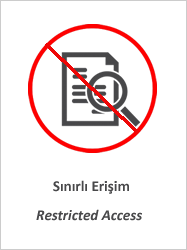Fabrication and characterization of Graphene oxide/Fucoidan/Chitosan reinforced Poly(vinyl alcohol) nanocomposites
Citation
ÖZDEMİR, Dilara Gülsüm, Nilüfer EVCİMEN DUYGULU, Ali Can ÖZARSLAN & Fatih ÇİFTCİ. "Fabrication and characterization of Graphene oxide/Fucoidan/Chitosan reinforced Poly(vinyl alcohol) nanocomposites". Journal of Molecular Structure, 1301 (2024): 137330.Abstract
This study aimed to create nanocomposite films (NCFs) by combining various bioactive substances, including
conductive and biocompatible carbon nano-based graphene oxide (GrO), bioactive material Fucoidan (Fuc),
Chitosan (Cs) biopolymer, and PVA polymer. The objective was to develop a novel biomaterial that could be used
in biomedical applications. The developed NCFs were characterized using SEM, FTIR, TGA-DSC, and XRD
analysis. Structural studies confirmed the successful production of the NCFs, while morphological examination
demonstrated the uniform and smooth character of the NCFs. Furthermore, the tensile test results indicated that
NCFs, characterized by a novel composition, had the highest recorded value for tensile strength. The NCFs that
were constructed have been modified to fit mathematical models, which have yielded results related to Franz
diffusion. These results indicate that the addition of GrO supplements significantly enhances conductivity.
Furthermore, the presence of GrO supplements affects the biodegradation periods at different pH levels and the
kinetics of Franz diffusion. In addition, biocompatibility and cell attachment tests were conducted throughout 1,
3, 5, and 7 days of incubation with the fibroblast cell line. The results demonstrated that the inclusion of Fuc
enhanced the bioactivity of NCFs. In general, the results of the cell investigation indicated that GrO-loaded NCFs
exhibited the best level of cell viability at all incubation durations compared to the other samples.



















